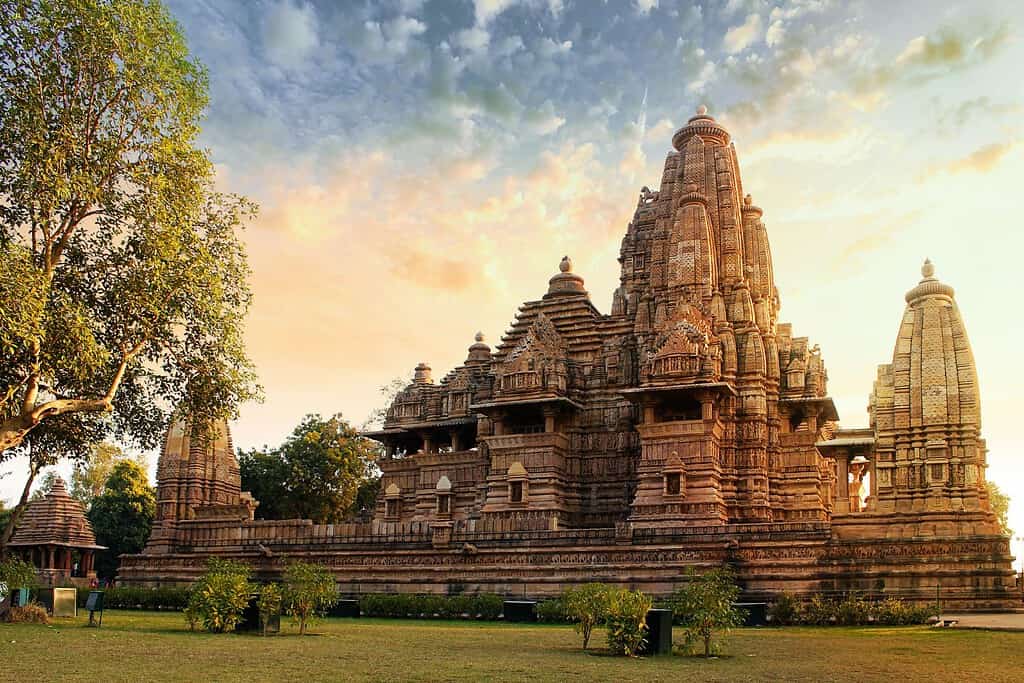Table of Contents
Where is India located? India is a country located in South Asia, in the southern part of the Asian continent. It is the seventh-largest country in the world by land area and the second-most populous.
India is situated south of the Himalayan mountain range, bordering the Arabian Sea to the west and the Bay of Bengal to the east. It shares borders with several neighboring countries. To the north, it is bordered by China, Nepal, and Bhutan. To the northwest, it shares a border with Pakistan. To the east, it is bounded by Bangladesh and Myanmar (Burma). To the south, it is bounded by the Indian Ocean, with the island nation of Sri Lanka just off its southern tip.
Where is India located: Asia.
Location of India on the World Map
India World
Map of India.
India Profile – Where is India located
Here are 10 of the most important facts about India:
- Official Name: Republic of India
- Capital City: New Delhi
- Population: Approximately 1.39 billion (as of 2021)
- Official Language: Hindi (in the Devanagari script) and English
- Currency: Indian Rupee (INR)
- Major Religion: Hinduism (followed by Islam, Christianity, Sikhism, Buddhism, and Jainism)
- Government: Federal parliamentary democratic republic
- Area: Approximately 3,287,263 square kilometers
- GDP (Gross Domestic Product): $2.87 trillion (as of 2021)
- Main Exports: Software services, petroleum products, textiles and clothing, gems and jewelry, engineering goods, chemicals, and pharmaceuticals.

Borders of India
India shares land borders with seven countries.
| Bordering Country | Approximate Length of Border (in kilometers) |
|---|---|
| Pakistan | 3,323 km |
| China | 3,488 km |
| Nepal | 1,751 km |
| Bhutan | 699 km |
| Bangladesh | 4,096 km |
| Myanmar | 1,643 km |
| Sri Lanka | 0 km (separated by the Palk Strait, but no direct land border) |
India Map
Navigate over this map with your mouse to discover the India map location.
India
Most Extreme Points of India
India has several extreme points in different directions:
- Northernmost Point: Near the border with China, in the region of Jammu and Kashmir, at Siachen Glacier.
- Southernmost Point: The point on the Indian Ocean, at the southern tip of the mainland in Kanyakumari, Tamil Nadu. Additionally, the southernmost point of India’s territory is the Indira Point on the Great Nicobar Island.
- Easternmost Point: Near the border with Myanmar, in the state of Arunachal Pradesh, at Kibithu.
- Westernmost Point: Near the border with Pakistan, in the state of Gujarat, at the village of Ghuar Moti.
Highest Points of India
The highest point in India is Kanchenjunga, reaching an elevation of approximately 8,586 meters above sea level. It is part of the Himalayan mountain range.
| No. | Mountain | Elevation (meters) |
|---|---|---|
| 1 | Kanchenjunga | 8,586 |
| 2 | Nanda Devi | 7,816 |
| 3 | Kamet | 7,756 |
| 4 | Saltoro Kangri | 7,742 |
| 5 | Sia Kangri | 7,422 |
How big is India?
India covers an area of approximately 3,287,263 square kilometers, making it the 7th largest country in the world.
Comparison with Neighboring Countries
Here is a comparison of India with its neighboring countries based on approximate size and population as of 2021:
| Country | Approximate Size (sq. km) | Approximate Population | India’s Size Compared to Neighboring Country | India’s Population Compared to Neighboring Country |
|---|---|---|---|---|
| Pakistan | 881,913 | 225 million | 3.81 times bigger | 6.31 times bigger |
| China | 9,597,000 | 1.4 billion | 0.35 times smaller | 0.89 times bigger |
| Nepal | 147,516 | 3 million | 22.80 times bigger | 48.29 times bigger |
| Bhutan | 38,394 | 0.8 million | 87.61 times bigger | 1,625 times bigger |
| Bangladesh | 148,460 | 166 million | 22.60 times bigger | 8.03 times bigger |
| Sri Lanka | 65,610 | 21.8 million | 51.27 times bigger | 65.14 times bigger |
| Myanmar | 676,578 | 54 million | 4.97 times bigger | 26.11 times bigger |
What to Visit in India?
India is a tapestry of ancient heritage, colorful traditions, and diverse landscapes. Here are the top 10 tourist attractions:
- Taj Mahal: Located in Agra, this iconic white marble mausoleum is a UNESCO World Heritage Site, symbolizing eternal love, and is one of the Seven Wonders of the World.
- Varanasi: One of the holiest cities in Hinduism, it is renowned for the sacred Ganges River and the rituals performed on its ghats.
- Jaipur: Also known as the Pink City, Jaipur is part of the famous Golden Triangle and is renowned for its majestic forts, palaces, and vibrant bazaars.
- Mumbai: India’s financial hub and largest city, offering a mix of colonial architecture, modern skyscrapers, and bustling markets like Crawford Market.
- Goa: A coastal paradise known for its beautiful beaches, vibrant nightlife, and Portuguese-influenced culture and architecture.
- Delhi: The capital city, boasting historical sites like the Red Fort, Qutub Minar, and the sprawling Chandni Chowk market.
- Bangalore: The Garden City and IT hub of India, known for its pleasant climate, lush parks, and vibrant nightlife.
- Rajasthan: Home to cities like Udaipur and Jodhpur, it offers regal palaces, sprawling forts, and the stark beauty of the Thar Desert.
- Darjeeling: A picturesque hill station in the foothills of the Himalayas, renowned for its tea plantations, colonial architecture, and panoramic views.
These Indian destinations offer a diverse range of experiences, from exploring ancient history and religious significance to enjoying modern city life and experiencing the natural beauty of India’s landscapes. Please note that some places may have specific restrictions or entry requirements, especially religious sites like Varanasi and Amritsar, so it’s essential to check before planning your visit.
More About India
[the-post-grid id=”50367″ title=”India Main page”]
